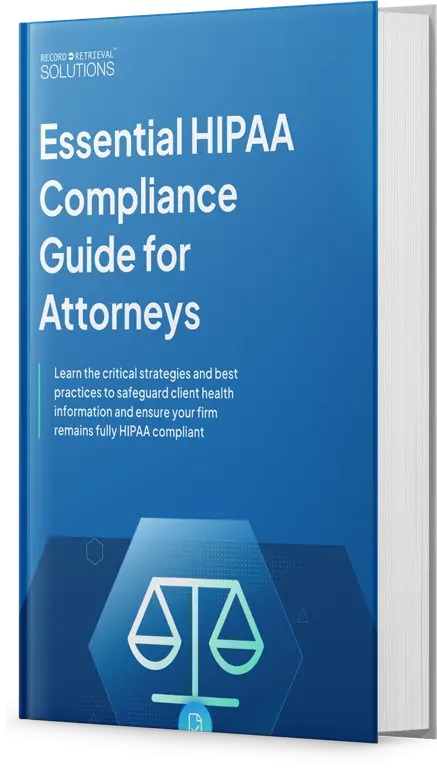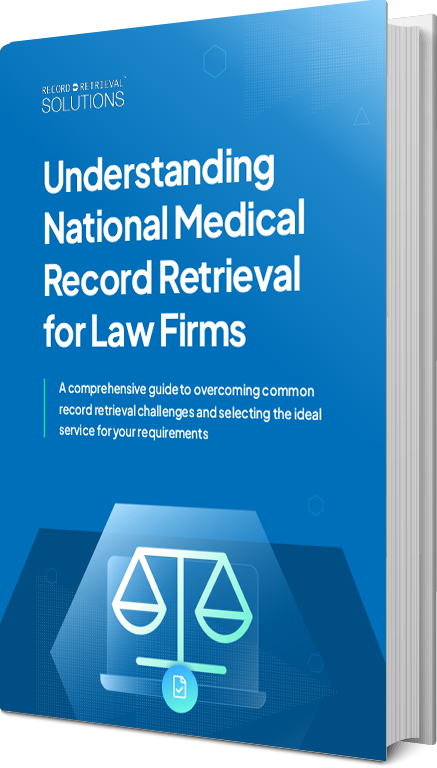The strength of a case often hinges on a single element: medical records. These documents are not merely routine paperwork; they are critical tools that can sway the outcome of a case. Understanding how to leverage these records effectively is essential for legal professionals aiming to secure favorable results for their clients.
Medical records play a pivotal role in establishing the severity of accident injuries. They are vital evidence linking the injuries directly to the incident, providing a documented trail of pain and suffering that is indispensable when negotiating with insurance companies or presenting a case in court. For attorneys and paralegals alike, grasping the nuances of these records can make a significant difference in the pursuit of justice.
This article delves into the importance of medical records in personal injury litigation, examining key components, challenges, best practices, and the essential role of legal representation. By strengthening legal claims with robust medical documentation, legal professionals can better advocate for their clients and navigate the complexities of personal injury cases.
Importance of Medical Records in Personal Injury Cases
Medical records are the cornerstone of a claimant’s success in personal injury cases. These documents establish causation, illustrate the severity of injuries, and clearly describe the medical treatment journey after the incident.
Here’s how they support claims:
- Establish Causation: Medical records provide objective evidence linking the incident to the injuries sustained.
- Demonstrate Severity: Diagnostic tests and treatment plans underscore the extent and impact of injuries on daily life.
- Quantify Damages: Detailed documentation aids in calculating both economic (medical bills) and non-economic damages (emotional distress).
The meticulous maintenance of medical records is pivotal. Insurance companies and defense teams scrutinize these records to unearth pre-existing conditions or inconsistencies that might diminish a claim’s value. Thus, accuracy and thoroughness cannot be overstated.
Below is a glance at how medical records impact the case:
Factor | Role of Medical Records |
Causation | Establish a direct link between the incident and injuries |
Severity of Injuries | Illustrate the seriousness through concrete evidence |
Damage Quantification | Calculate fair compensation based on medical expenses |
For an experienced attorney, well-maintained records streamline the legal process, ensuring the claim is strong, supported, and more likely to secure fair compensation.
The Role of Medical Records in Establishing Injury Severity
Medical records are invaluable in personal injury cases, particularly when assessing the severity of injuries sustained in an accident. These records meticulously document the date of the initial medical visit and clearly outline the nature of the injuries.
This allows for establishing a solid link between the event and its aftermath. With detailed documentation, including physician notes and diagnostic imaging results, evaluators can determine the injuries’ immediate impact and long-term implications on the claimant’s life.
Records assess whether the injuries are temporary or permanent, influencing essential decisions about ongoing treatment and the claimant’s ability to resume daily activities.
Moreover, including treatment plans and receipts provides a comprehensive financial record of past and anticipated future medical expenses related to the injuries.
Such thorough documentation effectively counters any allegations of pre-existing conditions, underscoring a well-documented medical history before and after the incident.
Linking Injuries to the Accident
One primary function of medical records in personal injury cases is establishing a direct connection between the injuries and the accident. They provide a timeline starting from the initial medical visit, documenting the nature of injuries sustained and the circumstances of their occurrence.
This detailed documentation, supported by healthcare professionals through diagnostic tests and treatment plans, forms crucial evidence for proving liability.
Furthermore, a comprehensive medical history helps thwart opposing parties’ attempts to claim the injuries were pre-existing or unrelated. The clarity and detail of medical records are vital in establishing causation and verifying that the injuries are an incontestable result of the incident.
Additionally, evaluators can thoroughly assess injury severity and potential long-term effects through physician notes, diagnostic imaging results, and rehabilitation progress reports.
Documenting Pain and Suffering
Medical records play a pivotal role in indirectly documenting pain and suffering. They offer a detailed account of the severity of injuries and the treatments they necessitate. Physicians often assess pain using standardized scales; recurring documentation of these levels can substantiate suffering claims.
Furthermore, prescription records for pain medications or mental health treatments offer evidence of the broader emotional and psychological impact beyond mere physical recovery. When injuries lead to psychological issues such as anxiety, depression, or PTSD, records from mental health professionals serve as decisive evidence in claims of emotional distress. By providing comprehensive documentation of pain levels and emotional distress, these medical records significantly strengthen claims by vividly illustrating how injuries have affected the claimant’s daily life and overall quality of life.
Below is a table that summarizes how medical records support various factors in a personal injury case related to pain and suffering:
Factor | Role of Medical Records |
Pain Documentation | Standardized assessments and recurring documentation |
Emotional Distress Evidence | Mental health treatment records and psychological assessments |
Treatment Documentation | Records of prescribed medications and therapies |
Impact on Daily Life | Illustrating effect on activities and quality of life |
In sum, adequately maintained and detailed medical records are the foundational evidence that can tip the scales in favor of achieving fair compensation for claimants in personal injury cases.
Key Components of Medical Records
Medical records are a cornerstone in personal injury cases, providing detailed documentation from the initial diagnosis through follow-up results. They serve as concrete evidence connecting the plaintiff’s injuries to the incident and laying the groundwork for fair compensation. Understanding the crucial components of these records helps attorneys and their teams navigate the complexities of personal injury claims.
Diagnosis
The diagnosis is often the first significant component documented in medical records, setting the stage for a personal injury claim. The initial medical evaluation is critical, establishing a baseline regarding the nature of injuries, symptoms, and the treatment plan following the incident.
- Initial Diagnosis and Exam: These records provide compelling documentation of injuries and their direct link to the incident. They serve as objective evidence supporting the plaintiff’s account.
- Emergency Room Records: These detail the immediate treatment received, which is crucial for establishing causation with the accident.
- Medical Test Results: Objective assessments, such as X-rays, MRIs, and blood tests, provide essential data regarding the severity and nature of the injuries.
- Physician Notes: These offer professional assessments, highlighting the injured party’s physical and sometimes emotional distress.
- Treatment Records track the progression of recovery and document the continuity of care, substantiating medical needs, and related escalated costs.
Treatment Plans
Treatment plans are pivotal in illustrating the recovery process and the necessary post-injury steps.
- Prescribed Therapies and Timelines: These outline the roadmap for recovery, indicating what treatment is essential to restore the plaintiff’s health to its previous state.
- Documentation of Treatment: This is critical as it shows the nature and extent of care required after an injury.
- Calculating Damages: Treatment plans provide crucial information for estimating ongoing care and rehabilitation costs.
- Follow-Up Notes: These document the patient’s progress, any complications, and the overall impact of the recovery injury, serving as objective evidence to strengthen the claim’s legitimacy.
- Nature and Correlation: Comprehensive treatment plans clarify the correlation between sustained injuries and the prescribed therapies, reinforcing the claim’s validity.
Follow-Up Results
Follow-up results in medical records are vital in capturing the full scope of the injury’s impact over time.
- Regular Progress Reports detail how the injury progresses, whether complications arise, and whether the prognosis improves or worsens.
- Detailed follow-up records help portray the full scope of necessary medical care, reinforcing the claim of ongoing medical expenses.
- Severity of Injuries: The observations noted during these follow-up examinations provide concrete evidence to support injury severity claims.
- Ongoing Treatment Records: These help quantify damages by showing the need for continued medical care, influencing compensation amounts.
Medical records are indispensable in proving the severity and direct link of injuries to an accident, charting the path of recovery, and assisting attorneys in securing fair compensation for clients.
Challenges in Utilizing Medical Records
Medical records are the bedrock of personal injury cases, providing concrete evidence to support injury claims and pursue fair compensation.
However, utilizing these records comes with challenges that can affect the outcome of a case. Thorough documentation is essential to overcome gaps and inconsistencies that could undermine the strength of a claim. Here are key challenges and considerations:
Dealing with Pre-existing Conditions
Pre-existing conditions often play a critical role in personal injury claims, as insurance companies may attempt to attribute a plaintiff’s injuries solely to these conditions. Comprehensive medical records are invaluable for establishing the individual’s baseline health before an accident. Documentation from previous medical appointments helps clarify how an accident exacerbated any pre-existing condition.
For instance, New York law acknowledges that plaintiffs are entitled to compensation if an accident aggravates an existing injury.
Thus, maintaining accurate and consistent medical documentation is essential for demonstrating that any treatments directly resulted from the accident rather than ongoing care for previous health issues.
A well-documented medical history that includes all symptoms and treatments can effectively counter attempts by insurers to misattribute pain or impairment to pre-existing conditions.
Navigating Incomplete Records
Incomplete medical records pose a significant challenge in building a strong personal injury case.
Gaps in documentation can weaken the case for compensation, so it is crucial to identify and address these discrepancies promptly.
Insurance companies may exploit these gaps to argue that injuries are unrelated to the accident, attributing them to pre-existing conditions or other factors.
While offering efficiencies, reliance on electronic health records can sometimes lead to data transfer issues or accessibility problems, resulting in incomplete records.
Personal injury attorneys must diligently review all medical documentation to ensure every pertinent detail is accounted for. This vigilance ensures that all injuries and treatments are appropriately cataloged, leaving no room for insurers to dispute the evidence.
In summary, medical records are indispensable in personal injury cases but require careful management and thorough documentation to overcome challenges related to pre-existing conditions and incomplete records. As the foundation of your case, these records must be meticulously organized and accurate to ensure successful litigation and just compensation.
Best Practices for Managing Medical Records
Medical records are the cornerstone of building strong personal injury cases. These documents validate the existence and severity of injuries, effectively establishing liability. They serve a dual purpose: protecting against insurance companies’ tactics to discredit injuries and substantiating claims for compensation.
Let’s explore crucial practices for managing these invaluable records.
Organizing Documentation
Proper organization of medical documentation is vital to effectively prove the extent of injuries. Here’s how to ensure your records are always in order:
- Systematic Filing: Organize all documentation, including medical bills, prescriptions, diagnostic reports, and doctor’s notes. Each piece provides crucial evidence for demonstrating the severity and impact of injuries.
- Follow-up on Treatments: Keep track of treatment recommendations and ensure clients follow through. Disregarding advised care can diminish the perceived severity of injuries and adversely affect claim outcomes.
- Clarifying Medical Jargon: Medical documentation is often complex and may appear incomplete or difficult to understand. Engage medical experts when necessary to explain technical terms and ensure accurate legal interpretation.
- Maintaining Confidentiality: Securely store medical records to comply with privacy laws and protect them throughout the legal process.
By organizing documentation meticulously, you bolster your ability to effectively counter insurance company arguments about unnecessary care or fabricated injuries.
Ensuring Accuracy and Completeness
Accuracy and completeness in medical records underpin the strength and credibility of personal injury claims. Here’s how to achieve these standards:
- Precision and Detail: Medical records accurately reflect injuries, treatments, and prognoses. Such documentation is concrete evidence that significantly influences a case’s outcome.
- Professional Review: Qualified professionals must thoroughly review and summarize these records. Analyzing and presenting the evidence properly preserves its integrity in legal proceedings.
- Preventing Errors: Inaccuracies or omissions can undermine credibility and weaken the case. Ensure all records are meticulously updated and verified for factual correctness.
- Evidence of Causation: Well-maintained records help establish the causation between the accident and injuries, which is crucial for justifying financial compensation.
Precise and comprehensive medical records are pivotal in ensuring fair compensation. They provide judges and juries with concrete evidence, enhancing trust and supporting claims for damages, including emotional distress and non-economic losses.
Adhere to these best practices for managing medical records, personal injury professionals can effectively navigate the legal landscape and confidently advocate for their clients.
The Role of Legal Representation
The expertise and strategy of the legal team are often crucial to securing a fair and just outcome in personal injury cases. Medical records are the cornerstone of these cases, providing concrete evidence to substantiate claims.
An experienced personal injury attorney plays a pivotal role in gathering, analyzing, and presenting these records to effectively bolster a client’s case and overcome obstacles posed by opposing parties and insurance companies.
Importance of Skilled Attorneys
Skilled personal injury attorneys are crucial in navigating the complex landscape of medical evidence. They diligently gather necessary medical records, ensuring that each piece of evidence aligns with the overarching narrative of their client’s claim.
By collaborating with medical professionals, attorneys obtain comprehensive documentation substantiating injuries’ legitimacy and connection to the incident. A knowledgeable personal injury lawyer ensures that only relevant medical records are disclosed, maintaining the claimant’s privacy while providing robust evidence to support the case.
Given the intricacies of personal injury law, experienced attorneys meticulously craft summaries from extensive medical records. This process helps identify a case’s strengths and weaknesses, allowing for thorough preparation and strategic planning. Accurate organization of medical record summaries simplifies settlement negotiations and enhances overall advocacy for clients, ensuring a pathway to fair compensation.
Counteracting Insurance Company Tactics
Insurance companies are notorious for employing tactics designed to minimize claim payouts. They might attempt to discredit the severity of injuries or suggest that pre-existing conditions are solely responsible for the plaintiff’s suffering.
This is where well-documented medical records become indispensable. These records provide a clear, factual basis for the existence and severity of injuries, countering any insurance argument that aims to downplay the claimant’s suffering.
Medical records reflect consistent care, documenting injury progress and the necessity of treatment plans. They serve as a defense against claims of fabricated or exaggerated injuries. Moreover, healthcare providers’ notes confirming treatment necessity strengthen a case by countering insurer assertions of unnecessary or excessive care.
For cases involving pre-existing conditions, medical records clarify how the incident exacerbated the existing injuries, reinforcing the link between the accident and the observed health impacts.
By effectively leveraging medical documentation, attorneys can challenge insurance companies’ attempts to undermine their clients’ claims. The solid evidence provided by well-maintained medical records ensures that claimants have a formidable defense against unfair tactics, ultimately leading to a more favorable outcome.
How Medical Records Affect Compensation
Medical records are the backbone of personal injury claims, providing the necessary documentation to substantiate every aspect of the case. They meticulously document the extent of injuries and the corresponding treatments, acting as solid evidence to evaluate immediate and long-term medical expenses. This accurate medical documentation simplifies claiming compensation and ensures that all incurred costs are adequately justified.
Comprehensive and precise medical records enhance the claimant’s credibility and significantly strengthen the case for full and fair compensation. They clearly illustrate the severity of the injuries, countering potential arguments by insurance companies that might otherwise downplay the claim.
Moreover, timely updates to medical records are crucial; any delays or gaps in treatment can weaken a claim and be exploited by opposing parties.
Insurance adjusters and legal professionals rely heavily on these records to assess the validity of a claim. Complete documentation is vital for securing compensation, covering medical expenses, and addressing lost wages and pain and suffering.
Economic Damages
Economic damages in personal injury cases are concrete financial losses that require substantial proof. Essential elements include:
- Medical Bills: Medical records document treatment costs, from hospital stays to rehabilitation therapies, and underpin claims for economic damages.
- Lost Wages: Extensive documentation helps substantiate income lost due to missed work.
- Future Medical Costs: For permanent or long-term injuries, medical records project future treatment needs, aiding in calculating future economic losses.
- Reduced Earning Capacity: Records provide crucial evidence to demonstrate the injury’s impact on the plaintiff’s ability to work.
Such detailed records ensure that every financial aspect linked with the injury is meticulously accounted for, reinforcing claims for economic damages.
Non-Economic Damages
Quantifying non-economic damages, such as pain and suffering, presents unique challenges. Here, medical documentation assumes a crucial role in justifying claims:
- Daily Life Impact: Medical records reveal the injury’s day-to-day challenges and long-term effects.
- Emotional Distress: Notes from healthcare providers demonstrate the emotional toll, with therapists and pain management specialists highlighting chronic pain.
- Quality of Life: Documentation of pain levels and physical limitations is vital for assessing non-economic damages.
These records support expert testimony, offering a detailed interpretation of the injury’s impact on the plaintiff’s life. This evidence significantly influences the case outcome regarding non-economic damages, ensuring a well-rounded approach to securing rightful compensation.
In conclusion, medical records are indispensable in personal injury cases. They provide the necessary evidence to justify economic and non-economic damages. A meticulous, comprehensive approach to medical documentation is essential for any successful personal injury claim, helping plaintiffs obtain the fair compensation they deserve.
Conclusion
In conclusion, robust medical documentation is the cornerstone of winning personal injury cases. Medical records provide detailed information on injuries and treatments, establishing causation and severity. They effectively counter claims of preexisting conditions by presenting a clear health timeline before and after the incident, thus supporting the argument that injuries are accident-related.
Substantial medical evidence is crucial for quantifying damages. It shows the nature, extent, and duration of injuries and associated costs, such as medical expenses and lost wages. This enables a precise calculation of economic losses.
The testimony of medical experts, grounded in these records, plays a pivotal role in validating claims and potentially influencing jury decisions. Comprehensive medical documentation enhances a claimant’s credibility, proving they sought appropriate medical care and have a legitimate basis for their claims.
Key Benefits of Robust Medical Documentation:
- Establishes causation and severity of injuries
- Counters claims of preexisting conditions
- Quantifies economic losses
- Supports medical expert testimony
- Enhances claimant credibility
Thorough medical records fortify a personal injury case, paving the way for fair compensation and demonstrating concrete evidence of injury and its impact on daily life.
FAQs
Why are medical records crucial in personal injury cases?
Medical records provide undeniable evidence of the severity and nature of injuries from a medical professional’s perspective, serving as the cornerstone of strong personal injury claims.
How do medical records assist in settlements?
Approximately 95% of personal injury cases are resolved through out-of-court settlements, so detailed medical documentation is vital for successful negotiation and fair compensation.
What types of medical records are most relevant?
- Bills and receipts for medical expenses
- Treatment reports
- Diagnostic test results
These documents are essential in substantiating the economic and non-economic damages claimed.
Can medical records help with non-economic damages?
By documenting the physical and emotional impacts, these records strengthen pain and suffering claims.
Why is medical documentation necessary for ongoing treatment?
Ensuring a direct link between the accident and ongoing medical care solidifies claims for future medical expenses and continued recovery needs.






